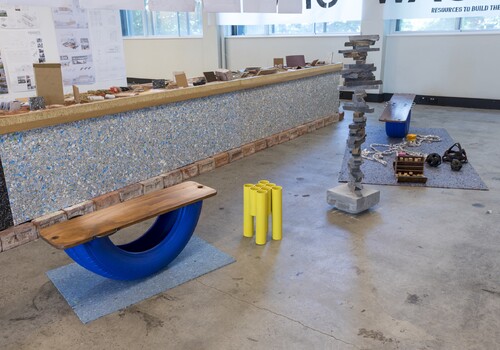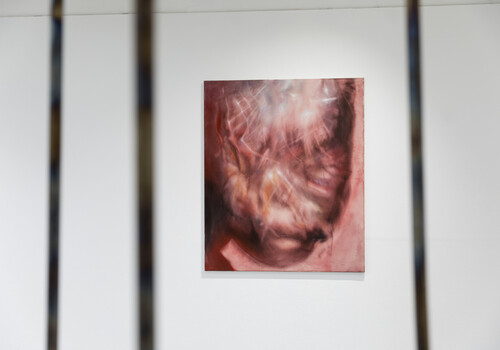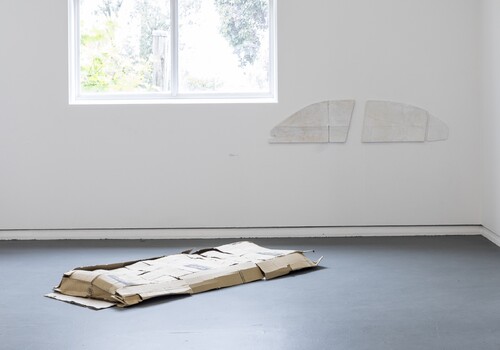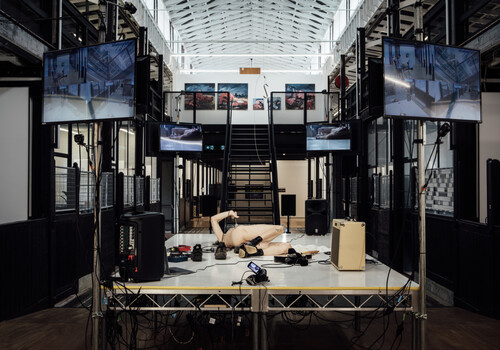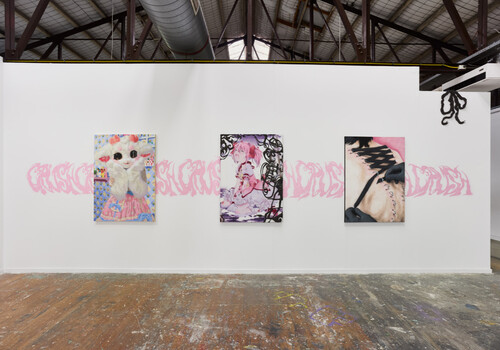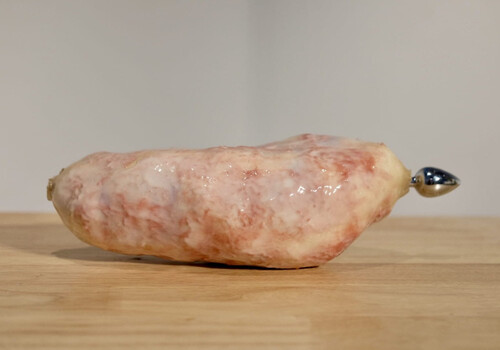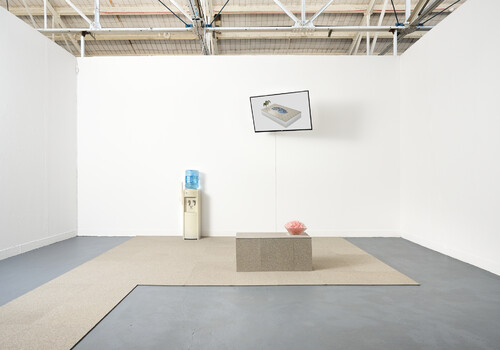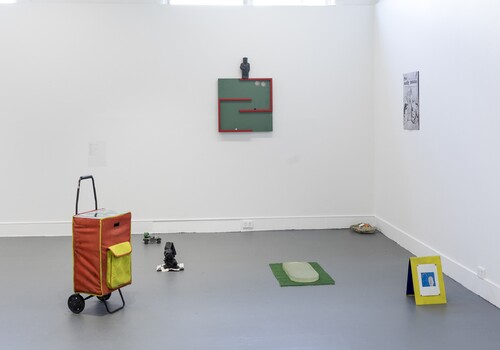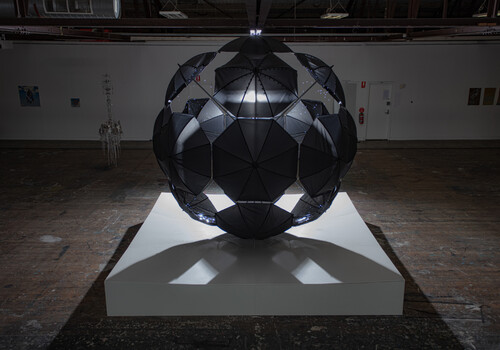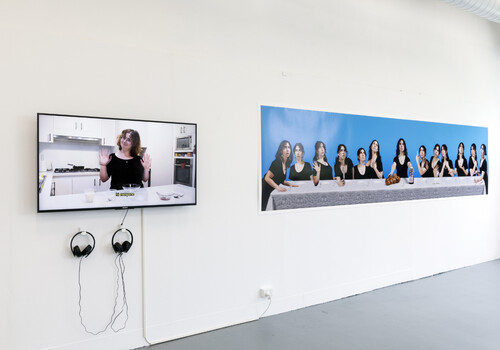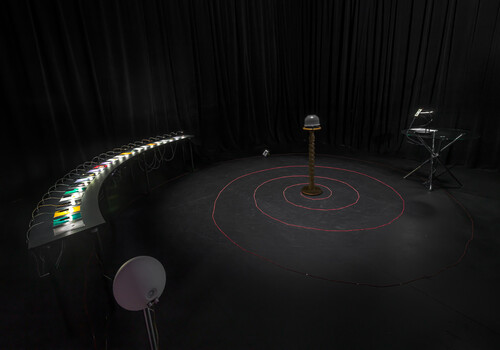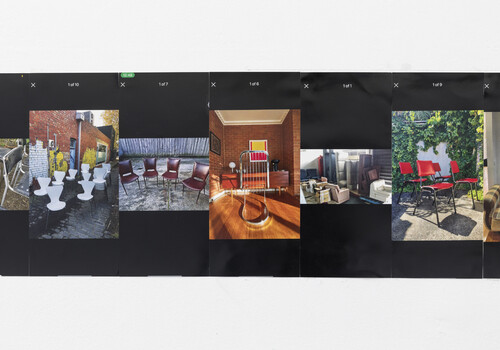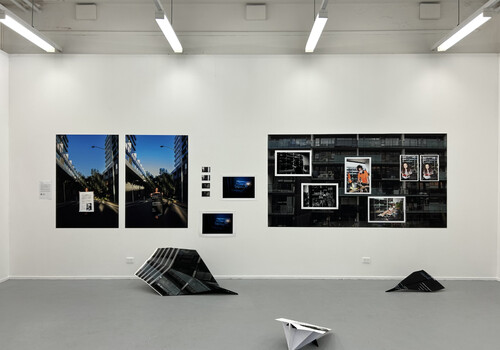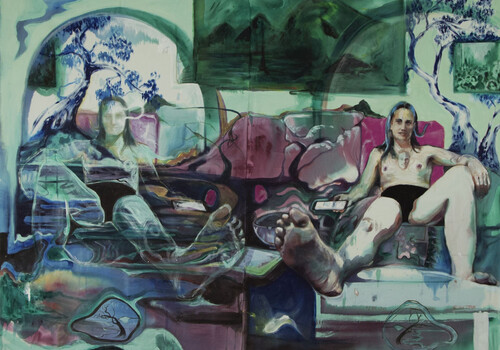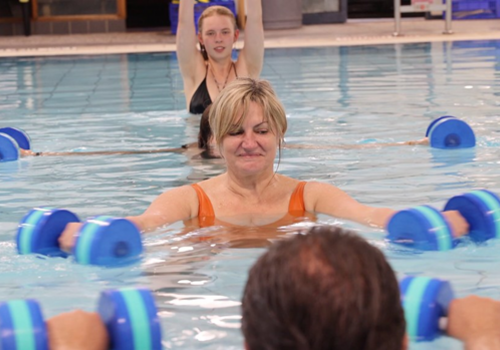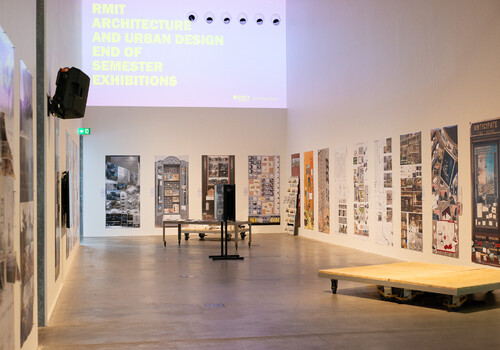Master of Fine Art, RMIT
By Bradley Visaka David
University graduate shows, by their very nature, are always contradictory. Politics crystallise, allegiances form, markets loom in optics and hierarchies. Consolidating multiplicities, individual agendas jostling amidst broader collectives can be dizzying—on the institutional level, as at the discrete. Increasingly commercialised art school shows provoke such conundrums. Institutional contact zones with an upscale festival aesthetic, they can be both jarring and predictable. RMIT’s multi-level graduate exhibition, along with an opening replete with franchise food truck and a sponsored drinks marquee, quickly reinforces the slippage between customer and student into the “marketplace of ideas”. Shifting priorities, as a result, frame the show in spectral transience.
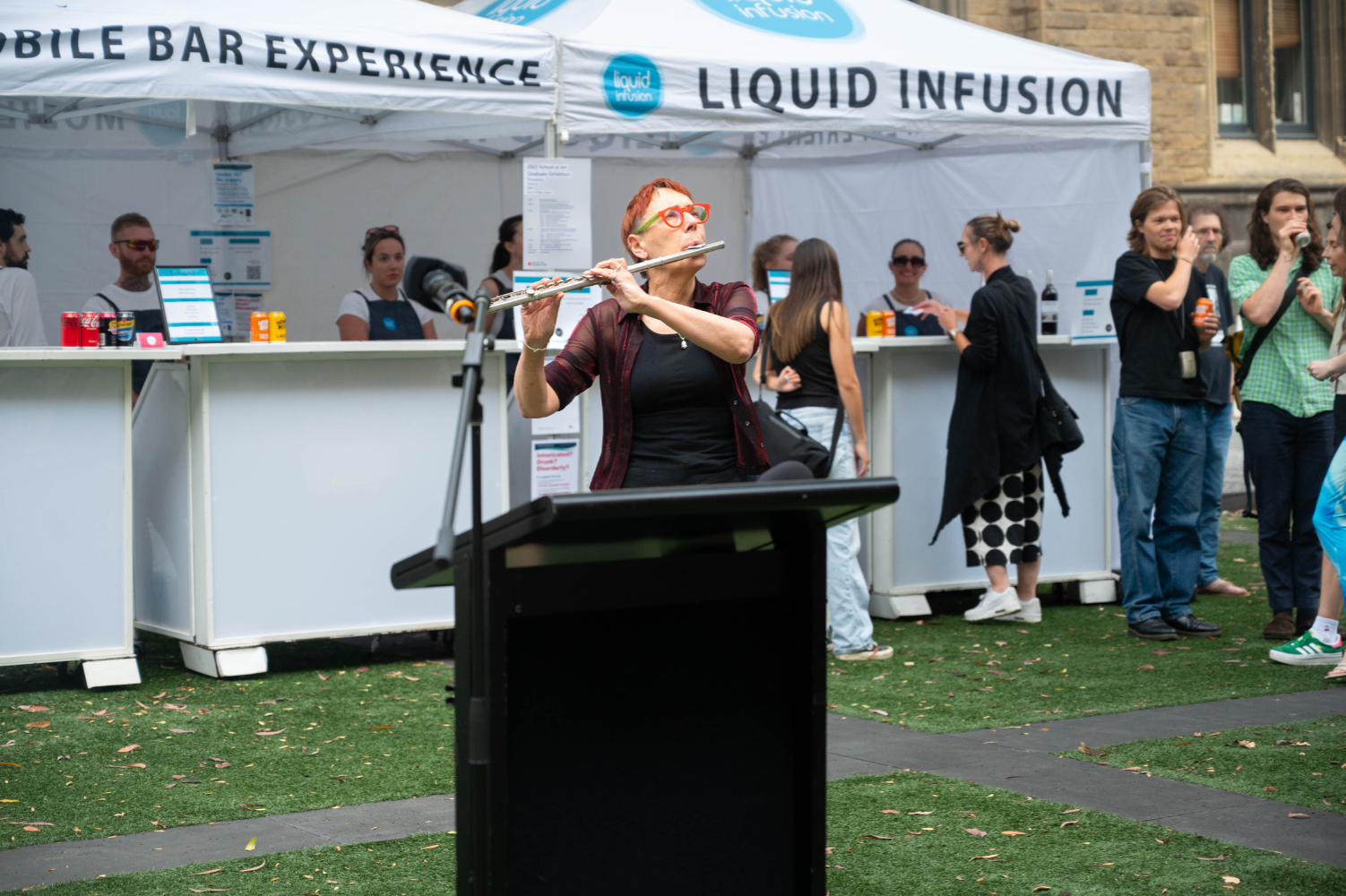
Shameless eavesdropping on opening night revealed anxieties at the proliferation of international students, the art school as a foreign wealth factory and its resulting curatorial influence. Such discord from the otherwise cultivated macro-theatre begs several questions, bigger than this review, but perspectival gravity was certainly clearer in some works than others. Dylan Marelić’s work embodies such a paradox, exploring interfaces between humans, technology, and environment through transmedia arrangements. Machinic Ecologies (2023) is both immediately grabbing, and thoroughly dispersed in the (un)context of its arrangement, the otherworldliness of its ecosystems crimped by the spatial relationships of the converted studio.
Several graduating honours artists repurposed space as liminal composition, as compounding, immersive image complexes of semiotic repositioning. Once mundane objects work in conjunction with mixed media to mosaic cultural histories, layering dialectics of dissonance and identity. The pointed habitation doubles here as documented defiance: “ventilating trauma”, artist Jiajing Ouyang calls it. Cumulative, promiscuous interplay between domestic objects, each holding their own cultural dialogue, imbues the installations with the multi-disciplinary logic of transient habitation, capturing multitude in fragments of the whole.

Metonymic soap sculptures of Christine Murray’s Moments Held: Ephemeral Sentiment (2023) evoke the ethereality of memory, where meticulous formal translucence gestures at the passage of object into nostalgic construct. Their staging, along with significantly obstructed light, detract from their quiet poignancy and craft, and the objects never fully transpose. In accompanying catalogue installation prints, however, Murray’s pieces capture light and temporality in remarkably melancholy ways.
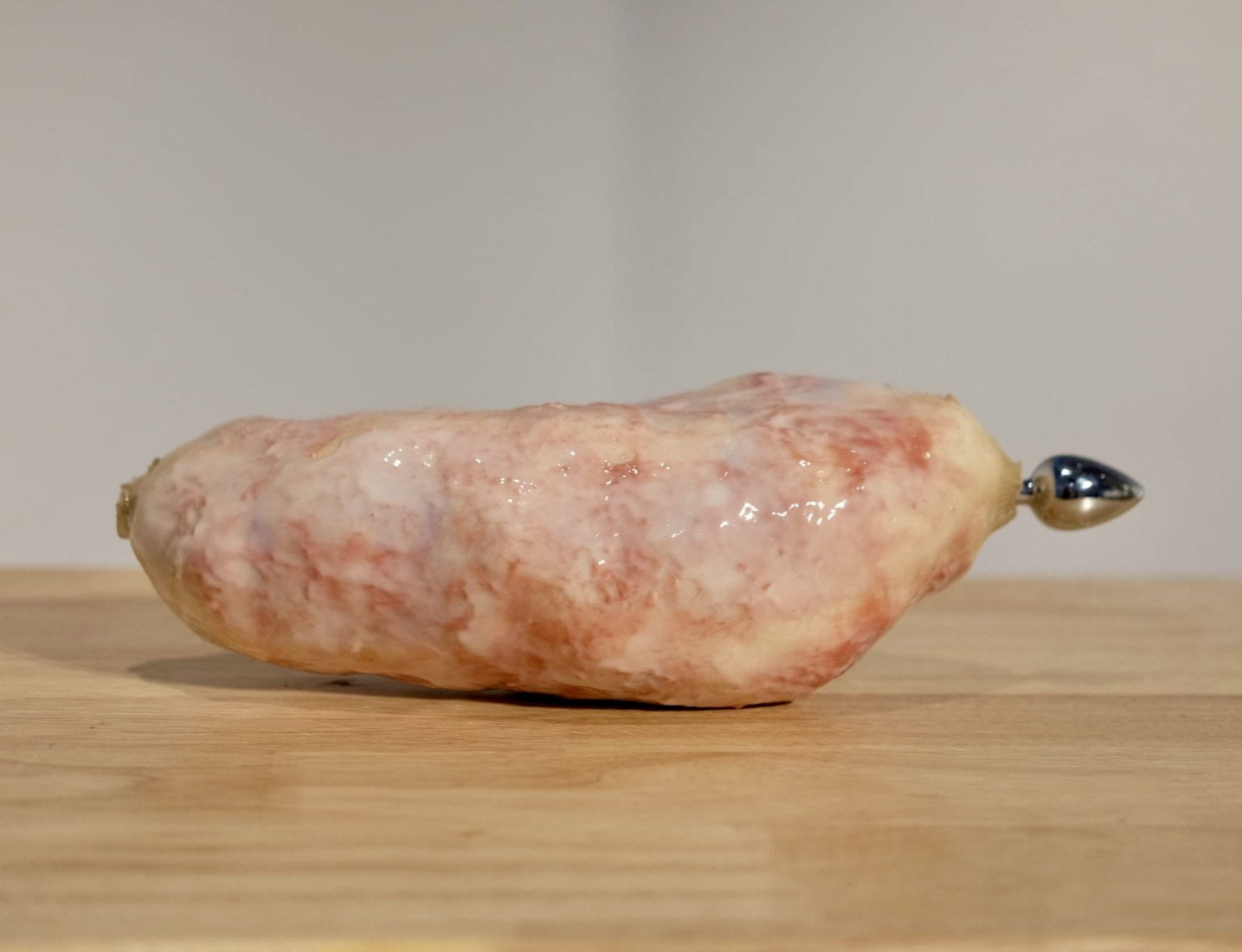
Utilising (crucially) a corner space to stage her work M(o)thered Milk (2023), Kara Inez Saheran interrogates Malaysian folklore in a visceral, claustrophobic installation of gendered cultural power. Mounds of disturbingly near human fleshiness, nippled vases, and a laden vanity surround a cross-habituative domestic frieze, arranged atop a banana leaf. Various containers of spice orbit a central mortar and pestle, remnants of ritualistic spiritualism and cycles of natural extraction. Live jasmine flowers give way to the performed, futile control of their husk, oozing out fleshy wraps, implicated around the room against open vents and a broom. Ceremonial fertility, and the paradox of the evergreen matrimonial, is darkly subverted through monstrous juxtapositions of cultural memory as patriarchal repressive. An accompanying performance piece, played on video loop in a corner skirted by vascular, foetal orbs and trailing hair, centres the examination of bodies, the cumulative tangle of socio-cultural histories, sub-containers of epigenetic wounds.
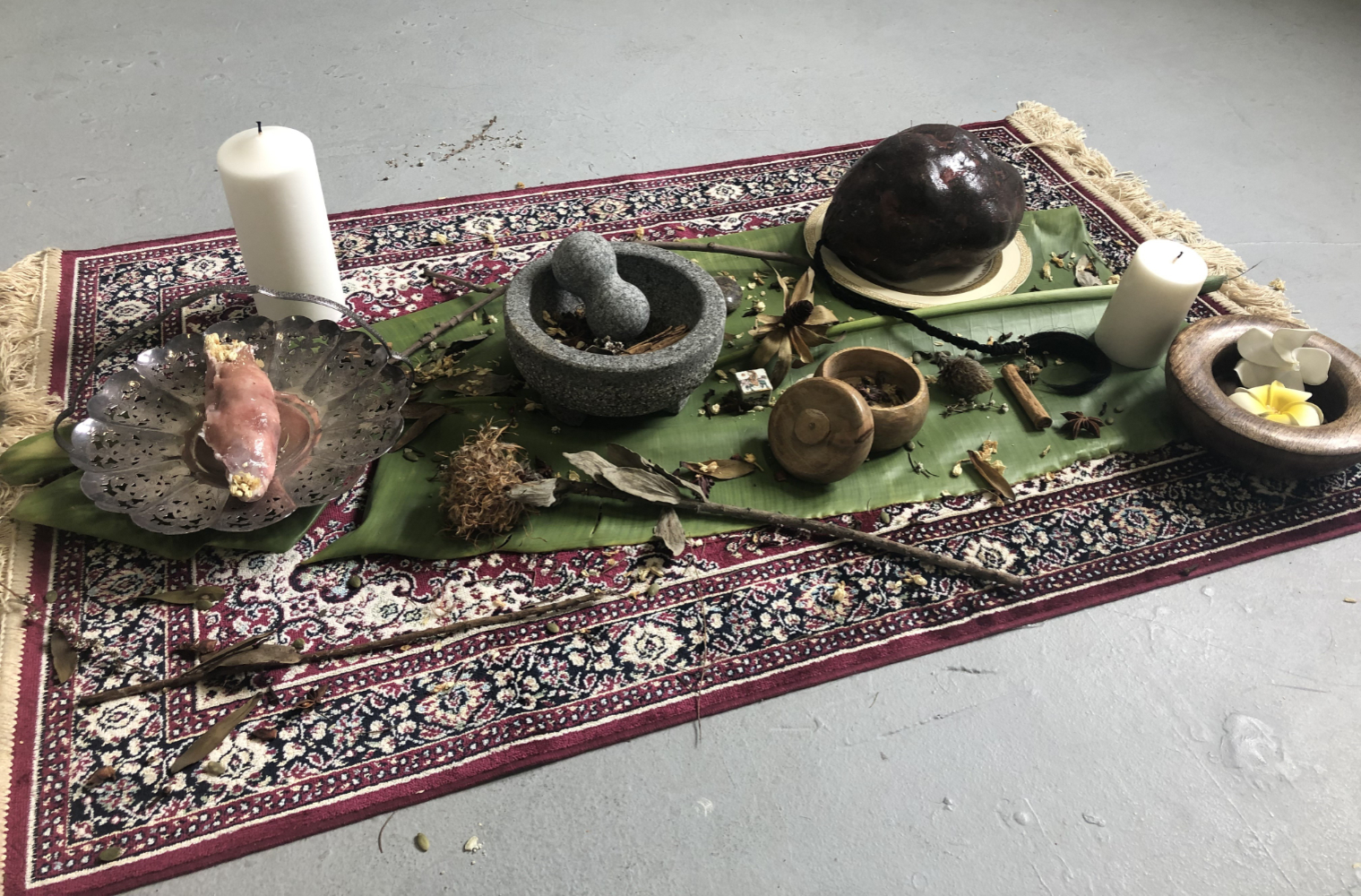
The diegetic ambition of such artists was ultimately subsumed in the whirl of something adjacent; shifting institutional priorities that laughably continued in the difficulty of securing documentation of works for this review. Transience, it seems, dissipates at the end of the transaction, when we all head out into the world, both customers and consumers. What mattered wasn’t what I saw, but that I was there. Although, as the institution may point out, it is the collective that was on show—the sizzle, and all that.
Bradley Visaka David is an artist and writer working on Wurundjeri Country.

